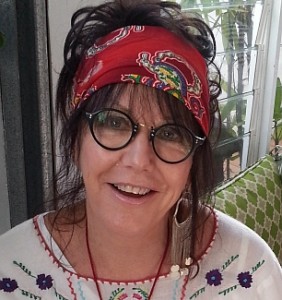Sue is Just One of 400,000 Polio Survivors Ignored by Federal Government
— PRESS RELEASE —
October is national Polio Awareness Month. On 29th October, polio survivors will converge on Parliament in Canberra to remind the Australian Government that the legacy of polio is still a very real, daily chronic concern for 400,000 Australians. The “We’re Still Here!” campaign highlights that the new National Disability Insurance Scheme (NDIS) shuts out Australia’s single largest physical disability group – the survivors of Australia’s polio epidemics.
People who believed they had overcome polio decades ago are again fighting a daily uphill battle for their health. Today many are experiencing new muscle weakness, extreme fatigue, and constant pain – a condition is known as the Late Effects of Polio (LEoP). Clinical studies have also shown that ageing polio survivors are significantly more susceptible to a whole gamut of additional chronic conditions. They urgently need financial help from the government to get specialised post-polio treatment right now.
Newfarm, Queensland, resident and polio survivor, Sue Mackenzie, contracted polio at age 2 in 1948. She missed a lot primary school due to the many operations needed to alleviate the effects of polio on her right leg. Sue recalls “My primary school lunch hours were taken up with physiotherapy. I wore a calliper until age 13, but was eventually able to lead a reasonably active but hardly ‘normal’ life.” Now in her 60’s, Sue has been married for 46 years and has 3 children and 8 grandchildren. In the last few years, she has been living with the late effects of polio. Sue says “Overall, I have found medical professionals have little understanding of the late effects of polio. They sent me to expensive podiatrists and physiotherapists, who also have little knowledge of my condition.”
Polio Australia’s President, Dr John Tierney, states “The NDIS comes way too late for the majority of our polio survivors as. It will not be fully rolled out until 2020, and most polio survivors will be ineligible due to the cut off age of 65 years. People need help now because “We’re Still Here!” and will be for decades to come. The personal cost of LEoP for individuals, carers and families is overwhelming. As the condition is not well known amongst health practitioners, on a macro scale, the burden on the Australian health sector due to mis-diagnosis and inappropriate management also requires major financial contribution from the government. We continue to do everything we can to support people, but it is time for the government to step up and financially stand behind our work.”
Dozens of polio survivors will be travelling to Parliament House, Canberra, on the 29th October for Polio Australia’s “We’re Still Here!” campaign. This will be combined the nationwide launch of a new clinical practice resource for GP’s and allied health professionals titled “The Late Effects Of Polio: Managing Muscles And Mobility”, plus a “Polio Timeline” display which reflects on how “The polio legacy lives on”, and reinforcing the need for post-polio health services that are urgently required through Australian Government funding.
Media Contact for photo opportunities and interviews:
Kristy Rackham, RN
Health Education & Public Relations Consultant – Polio Australia
Ph: 0487 769 629 / E: kristy@polioaustralia.org.au





